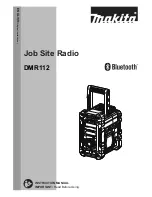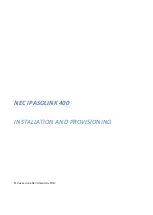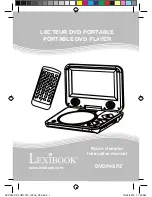
DESCRIPTION
The PCS Standard and DTMF Portable radios are small,
ruggedly constructed, two-way FM radios, housed in an alu-
minum and LEXAN case. The VHF synthesized radios op-
erate in the 136-174 MHz range and they can be purchased
with 2, 8, or 16 channel operation.
Operating controls for the radio are provided through a
rubber keypad on the side and front of the radio (a three-
button keypad on the Standard version and a twelve-button
keypad on the DTMF). All keypad switches have a good
tactile feel and are sealed to provide weather protection.
When turned "ON," the radio powers-up on the last channel
used and at the last volume setting. The operating controls,
UDC, and battery pack are shown in Figure 1.
All the PCS radios are equipped with a Universal De-
vice Connector (UDC) for connecting external options and
for programming the radios. The radios are programmed
using a personal computer and programming interface box
that connects to the UDC. The UDC is covered with a rub-
ber cover for improved weather protection.
The PCS uses a BNC antenna connector. The antenna
base is overmolded to fit flush against the housing for added
weather protection.
The radio battery pack securely latches in place at the
bottom of the radio. The radio ON/OFF switch is located
on the battery pack.
A Liquid Crystal Display (LCD) on the front of the ra-
dio shows the selected channel, volume level, SCAN mode
(SCN)*, and priority level (P1, P2, or S). The 2-channel ra-
dio uses the P1 and P2 pixels for high and low transmit
power indicators, respectively. In addition, the "S" pixel is
used to indicate "Talkaround" mode. The LCD also has a
transmit (TX) indicator, a low battery voltage indicator
(BAT), and a Type 99 paging (PG) indicator. There are
eight (8) levels of volume represented by the four (4) bars in
the LCD. Each bar represents two (2) volume levels. The
LCD module is backlit for night viewing and is mounted in
a rubber seal for weather protection.
The radio is shipped from the factory with the high
power level set to 5 watts and the low power level set to 2
watts.
*SCAN applies to the 8 and 16 channel PCS radios.
RADIO PROGRAMMING
Each of the 8 or 16 channel radios can be programmed
for SCAN operation, and Home Channel or Emergency
Channel, in addition to the Tone or Digital Channel Guard,
Squelch Tail Elimination (STE), Type 99 Tone Decoding,
Automatic Number Identification (ANI), channel busy lock-
out, and HI/LO transmit power level available on the con-
ventional 2-channel radio. These options can be
programmed on a channel-to-channel basis. Two different
T99 Tone tables can be programmed into the PCS. Each
channel is capable of Individual Group or Super Group De-
code.
Other programmable features include Carrier Control
Timer (CCT), display backlighting, and alert beep options.
These features can be programmed, as desired, to meet sys-
tem requirements.
Refer to the programming manual (TQ3366) for com-
plete programming instructions.
ASSEMBLY
The PCS personal radio consists of an RF board
mounted in the rear assembly, an audio/logic board mounted
in the front assembly, and a control frame assembly.
The RF board contains all transmit, receive, and synthe-
sizer circuits. The audio/logic board contains all transmit
audio and receive audio circuits along with all logic and
control circuits. A microprocessor on the audio/logic board
generates and decodes all tones used in Channel Guard or
Type 99 tone signalling.
The control frame assembly mounts in the radio front
cover and provides the following functions:
•
Audio/Logic board interface.
•
Microphone and speaker connections.
•
Houses the channel up/down, volume up/down,
monitor, and PTT switches.
When the battery is low, the low battery indicator
(BAT) is displayed on the LCD and an audio alert is
sounded every 7.5 minutes. When the battery is suf-
ficiently low to cause improper operation, the radio
microprocessor terminates all operation.
NOTE
LBI-38956
9










































